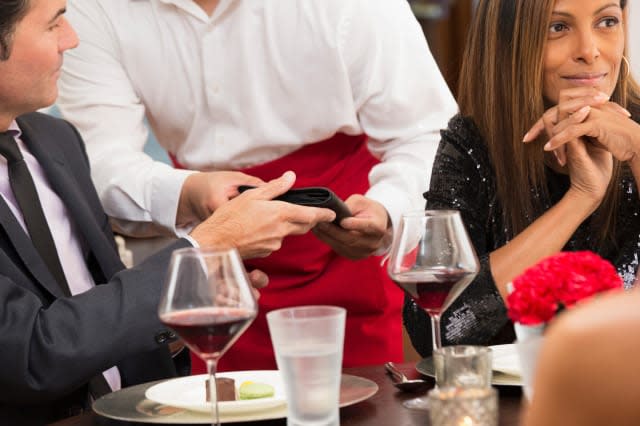The tricks restaurants use to make you spend more

If you've ever walked out of a restaurant asking yourself how on earth you've managed to spend so much, you're not alone - and you shouldn't blame yourself.
The restaurant industry is highly skilled at getting customers to hand over as much cash as possible, whether it's for an expensive bottle of wine or their finest steak.
But if you know some of these tricks, it can help you get a much better deal when eating out. We list seven signs to look out for.
Is your restaurant meal actually a ready meal?
The atmosphere
Studies have shown that the colour red makes us hungry, which is why it's the colour of choice for so many restaurants. Meanwhile, research from the University of Leicester has revealed that playing classical music - associated with wealth - encourages spending, while a lack of music does the opposite.
Marked-up wine
We all know that a bottle of wine in a restaurant costs a lot more than the same bottle from a supermarket. But did you know how much more? A Daily Mirror survey has found that a bottle of La Campagne Sauvignon Blanc costs £25.95 at Cafe Rouge, for example, but only £5.94 online.
Many people deal with the wine problem by ordering the second-cheapest bottle; but this is a mistake, the experts say. Precisely because so many people do this, restaurants tend to bump their mark-up up even more. The cheapest house wine, by contrast, is likely to have been bought with value for money in mind.
Diners queue for 'world's cheapest' Michelin-starred restaurant
The 'anchor' item
Ever wondered why so many menus include one outrageously-priced offering? It's not because they expect people to order it. But if there's a £50 Kobe beef steak on the list, suddenly that £25 sirloin looks cheap. The high-priced 'anchor' item is often placed at the top right hand corner of the menu, as this is where most people look first. Check the bottom left for cheaper options.
The specials
Special dishes are a win-win for restaurants. Often, they're announced by the waiter or waitress without the price being given, which means you may be spending more than you'd like. Second, they frequently consist of leftover ingredients, or food that is set to expire soon.
Why has Jamie Oliver closed six of his restaurants?
Sharing plates
Whether it's meze or tapas, there's been a huge trend in recent years to order several small dishes for sharing. While this is undeniably a pleasant way to eat, it can also be very expensive. While each of those dishes is cheap in itself, prices can really mount up. If you're eating this way, do it as originally intended, by ordering just two or three plates at a time. That way you won't end up with wasted food - and an over-inflated bill.
The adjectives
Vegetables are 'heritage', chips are 'hand-cooked' and everything's 'locally-sourced' and 'sustainable'. Often, these labels mean nothing at all; and either way they're intended mainly as a way of making your food seem more luxurious, and therefore worth a higher price.
The friendly staff
Constantly topping up your glass is, clearly, going to make you drink more. Waiters and waitresses are often keen to ensure that your bottle's empty before you've finished eating, encouraging you to buy another. They may wear red - research has shown that waitresses wearing red get bigger tips - and they may make a point of touching you casually on the shoulder as they bring the bill, as this has been shown to have a similar effect.




